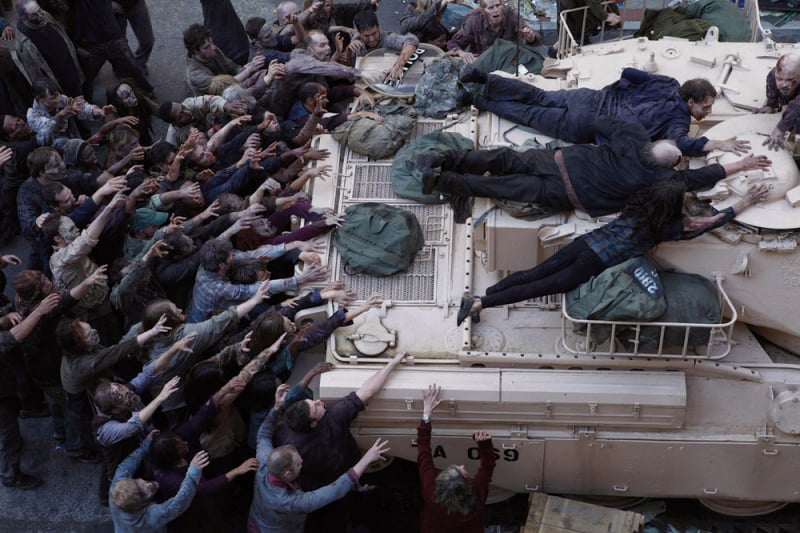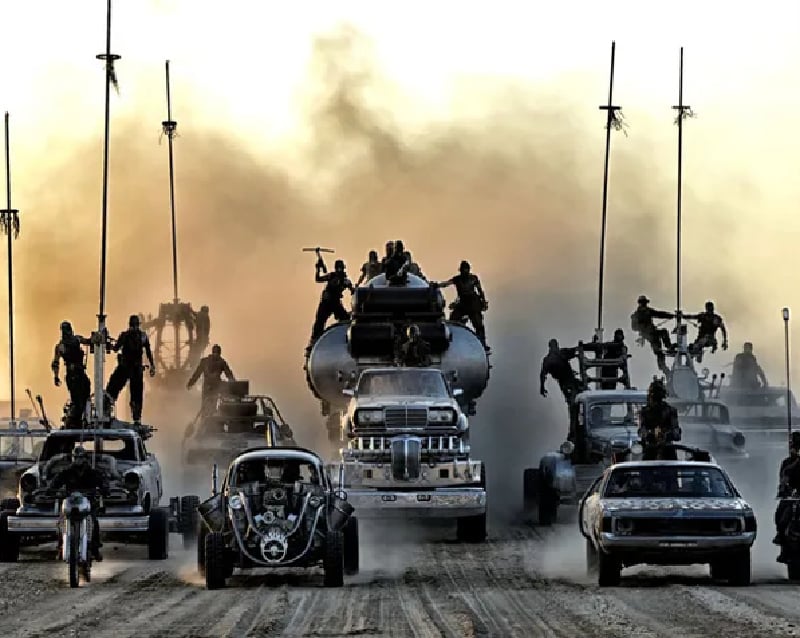
A favorite topic for entertainment is post-apocalyptic movies due to the blending of high-stakes drama, relatable fears, and horror. It’s doubtful that many screenwriters are experts in emergency preparedness or possess any knowledge of the likely causes of a societal collapse. Add to this lack of knowledge the need to create drama, and the genre is ripe for inaccurate myths and misconceptions. Although I enjoy a good post-apocalyptic movie, there are certain tropes that appear again and again that are not only wrong but potentially dangerous to anyone basing their survival decisions on big-budget films.
Myth: Most people will die in the first six months
Most post-apocalyptic movies generally are set well after the events that caused civilization to collapse. Even those that focus on the initial disaster quickly transition with a “months later” notation. What follows is the presentation of a grim reality with abandoned cities with only small bands (often less than 100 people) being the only people left in a blighted underpopulated world. Though it is impossible to know for sure, there are some factors that can be used to test this myth. In support of the myth is what we have seen when supply chains feeding and fueling major metropolitan centers have failed.
Although most major cities have the resources to feed their people with careful rationing for up to a month, what happens in the face of reality is generally all supplies are gone within three days due to rioting and hoarding (how were your toilet paper supplies during the early days of COVID-19?). Further, Americans in urban settings statistically have less than three days of food and water within their homes.
It is easy to see mass starvation and civil unrest occurring if aid is not quickly provided. What happens when every major city faces such issues at the same time due to a countrywide or worldwide apocalypse? A U.S. congressional report on the country-wide disruption of services (specifically a complete collapse of the power grid that would take years to repair) estimated between 67%-90% of U.S. citizens would die of famine and disease within the first year. This would seem to support the myth, but let’s take a closer look.

There are over 300,000 Amish living in self-sufficient communities within the U.S. that would likely not be greatly impacted by many potential apocalyptic events. The largest Amish community boasts populations in excess of 30,000 and the number of Amish communities is on the rise with a new community being formed once every 3-4 weeks. Add to this the basic math that though 90% of the population is a huge decline, the current population of the U.S. is 339,996,563. Reduced by 90%, that is still 33,999,656 people living in the United States.
Although some disasters may eliminate almost all of the population (massive solar storms, asteroid impact, etc.), most events, including global pandemics, would likely result in a lesser loss of life. Thus, this myth is at least somewhat busted, though the massive loss of life shown in movies may be closer to the truth (67-90%) than many would like to believe.
Myth: The military will be all but destroyed
An unsettling scene with survivors stumbling upon a quiet, abandoned fleet of tanks and military equipment is often portrayed in the movies. Building on the previous myth, many people unfamiliar with the U.S. military may be unaware of how prepared our forces are to survive most supply chain issues. Although many military bases today are still dependent on the overall power grid, the Army plans to be completely energy-independent by 2035.
Today, the Army has multiple bases completely powered by local renewable energy sources and the number of such bases is increasing each year. Although some supernatural-based apocalypse might be able to overwhelm some facilities, it is also important to recognize that our navy currently has 11 super-carrier fleets (each with 7,000-8,000 personnel) with 9 of these fleets currently deployed. Although having the military easily overwhelmed is a great way to communicate the threat in a movie, the military is much more likely to survive intact than our other institutions. This myth for most movies is likely busted.

Myth: Guns will be hard to find
Although the population may be reduced by up to 90%, the number of firearms available is not going to be so affected. Within the U.S., there are an estimated 450,000,000 small arms (pistols, shotguns, and rifles), including police and military forces. Over 400,000,000 of those are owned by civilians, with guns being present in at least 40% of homes. If the population is reduced to approximately 34 million, that is over 13 firearms for every survivor in the U.S. with almost half of the abandoned homes containing at least one gun.
Additionally, it is estimated that approximately 44 million AR-15s are in the hands of civilians in the U.S., equating to over one AR-15 per survivor.
What about ammo? It is estimated that 12 billion rounds are sold in the U.S. each year, much of which is stockpiled by private gun owners. This paints a picture of a high availability of firearms of all types and plenty of ammunition for those who survive the first year.
Hollywood tends to live in a bubble of their own urban experiences and having your protagonists move about with limited access to firearms and just a few rounds of ammo does allow for more drama. The reality, though, is that in almost any conceivable scenario in any part of the world, there will be an abundance of guns and ammo for the foreseeable future.
This myth is totally busted.
Myth: Needed supplies and medicine will still be found in convenience stores
Although the availability of firearms and ammo may be widely available, many of the daily needs (perishables) will likely be hoarded and stripped from store shelves in mere days. Though the trip to an abandoned drug store is a Hollywood staple in obtaining needed medicines years into an apocalyptic event, the reality is much bleaker. Most perishable goods are produced to match demand. Once the supply chains collapse, these items will quickly disappear in the first few days.
In fact, our current system of only producing to meet demands often results in regular shortages that can take over a year to catch up to when demand spikes. Even as supply chains recover in 2023, several common drugs including amoxicillin, Adderall, morphine, Ozempic, fentanyl, and others are all facing supply chain shortages compared to demand. Another disturbing likelihood is that medications that require temperature stabilization, such as refrigerated insulin, will diminish in availability very quickly. Like many myths on this list, finding stockpiles of needed drugs months after a disaster is highly unlikely.

Myth: Vehicles will still be available and gasoline viable and sought after
Although a driving principle in some movies, the reality is that gas starts to go ‘bad’ if unused as quickly as 3-6 months after manufacturing. If stored correctly, it can last up to 3 years. But in an apocalyptic world, storage options are likely less than perfect.
Will gas that is ‘bad’ not work at all? No, but it will quickly prove less effective, and eventually, all fuel reserves will be depleted. As much as we might want to join the post-apocalyptic motorcycle gangs at the end of the world, we are much more likely to wish we had a horse or a really good pair of walking shoes. Unfortunately, this is another myth that is busted.
Conclusion? Never trust Hollywood
Hollywood is in the entertainment business. They often tell a great story, but they’re rarely accurate. Even historical dramas, like the HBO series Band of Brothers, are choc-full of inaccuracies and creative liberties. As such, it’s critical that we steer clear of Hollywood when developing a plan for the apocalypse — whatever it may be.
Are there any other Hollywood myths you can think of?


